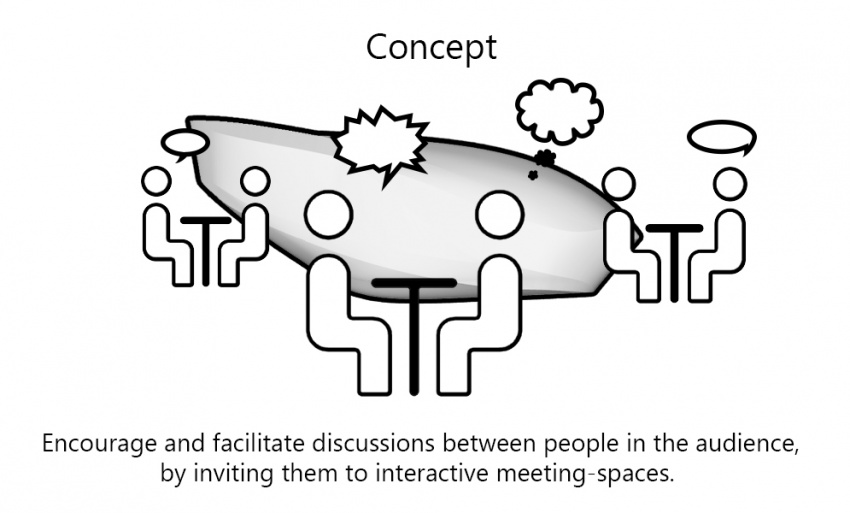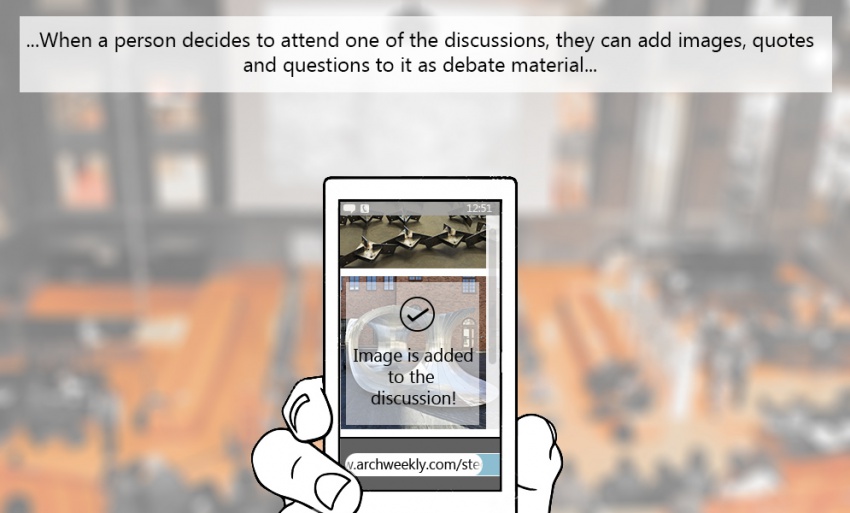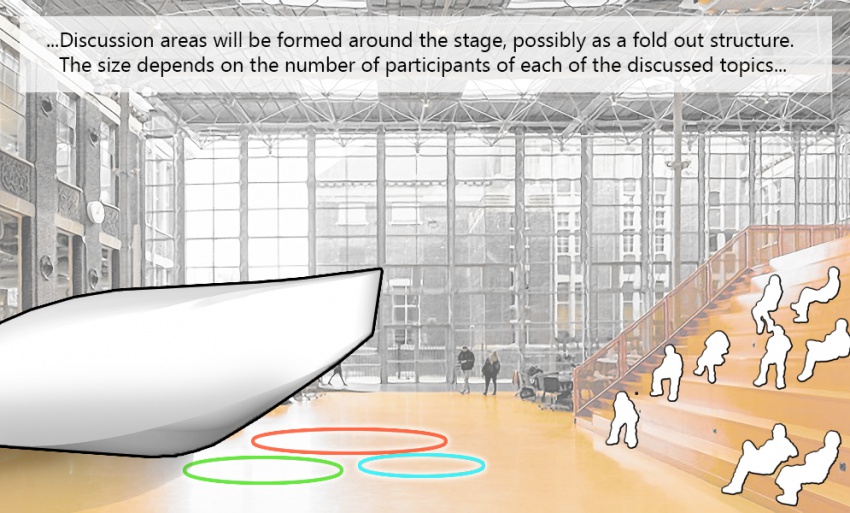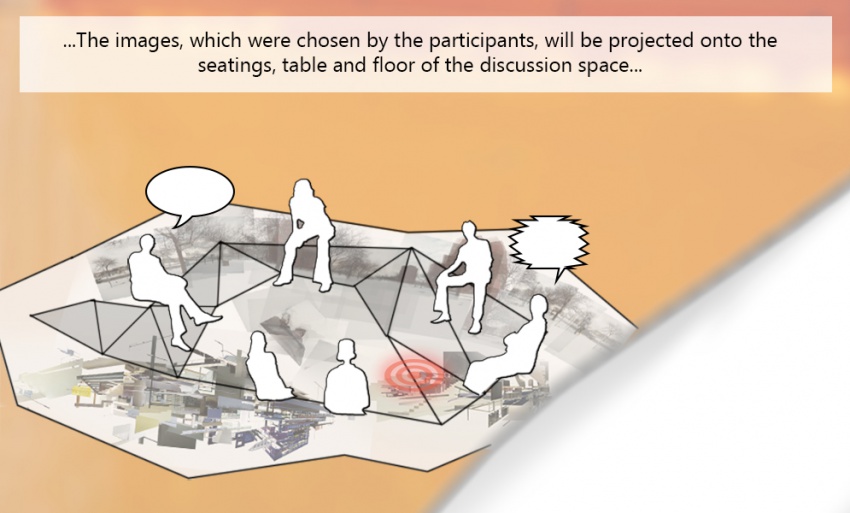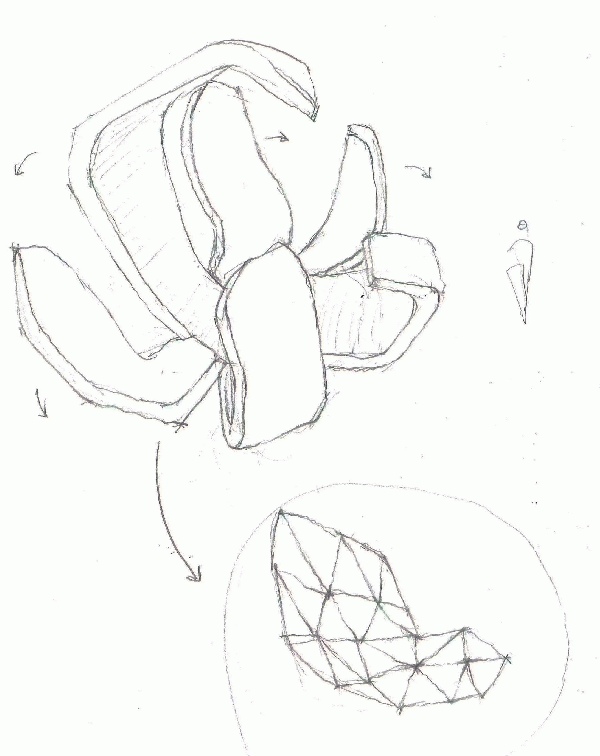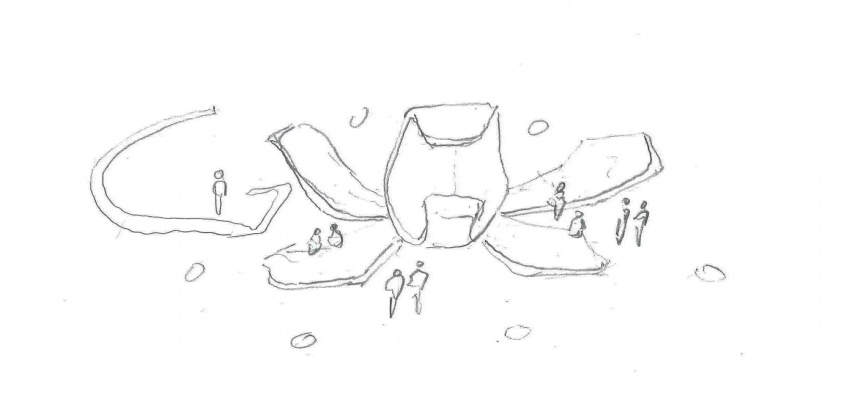Difference between revisions of "Msc2G2:Group"
Marco Galli (Talk | contribs) (→GROUP II) |
|||
| (17 intermediate revisions by 2 users not shown) | |||
| Line 5: | Line 5: | ||
---- | ---- | ||
| − | Group 2 members: Alastair Fraser, Dominik Philipp Bernátek, Haris Grivokostopoulos | + | Group 2 members: Alastair Fraser, Dominik Philipp Bernátek, Haris Grivokostopoulos |
---- | ---- | ||
| Line 25: | Line 25: | ||
The idea about a symposium, lecture or debate is the EXCHANGE of KNOWLEDGE. An interactive stage should support the exchange of knowledge maximally. | The idea about a symposium, lecture or debate is the EXCHANGE of KNOWLEDGE. An interactive stage should support the exchange of knowledge maximally. | ||
| − | Scenario 1 – the lecture | + | Scenario 1 – the lecture |
| − | Scenario 2 – the debate (lecturers) | + | Scenario 2 – the debate (lecturers) |
| − | Scenario 3 – the group discussions (audience) | + | Scenario 3 – the group discussions (audience) |
| − | Scenario 4 – “free-standing” | + | Scenario 4 – “free-standing” |
1- The lecture | 1- The lecture | ||
| − | a) BIG audience => more seating should be provided = in addition to the seating which is already provided by the room, seats could “pop up” from the stage and face the stage | + | |
| − | b) small | + | a) BIG audience => more seating should be provided = in addition to the seating which is already provided |
| − | c) lecture happening outside Orange Hall => stage could function as an independent, self-sufficient unit | + | by the room, seats could “pop up” from the stage and face the stage |
| + | |||
| + | b) small audience*1 => whole audience can be hosted by the stage’s seats | ||
| + | |||
| + | c) lecture happening outside Orange Hall => stage could function as an independent, self-sufficient unit | ||
| + | provide its own seating (only a certain amount of seats will be possible) | ||
| + | |||
NOTE: if people are sitting on the stages chairs during the lecture, how do we reconfigure them to a debate area? | NOTE: if people are sitting on the stages chairs during the lecture, how do we reconfigure them to a debate area? | ||
2- the debate (lecturers) | 2- the debate (lecturers) | ||
| − | a) seats are hosting the debating presenters, audience is listening | + | |
| − | needs: | + | a) seats are hosting the debating presenters, audience is listening |
| − | + | ||
| + | needs: (flexible in number)*2 + ideally provided by the stage | ||
3- the group discussions (audience) | 3- the group discussions (audience) | ||
| − | |||
| − | needs: | + | a) seating to enhance the debating about topics of the lecture or interests |
| − | + | ||
| − | + | needs: flexible in number*2/adjustable for smaller and bigger groups + moveable + inviting the people to the stage/engage *3 | |
| − | + | ||
4- “free-standing” | 4- “free-standing” | ||
| − | a) Invite people to interact with the object | + | |
| + | a) Invite people to interact with the object | ||
If individual chairs maybe it has to be made sure that everybody puts it back in before the “leaf” folds in again? (not necessarily) | If individual chairs maybe it has to be made sure that everybody puts it back in before the “leaf” folds in again? (not necessarily) | ||
| − | 1 small audience def.: such an amount of people that is smaller than / equals the amount of seating that can be provided by the stage | + | |
| − | 2 individual seats create a more formal atmosphere, if the presenters are given “couches” the atmosphere gets more relaxed (better for the presenters and the audience to listen to) | + | *1 small audience def.: such an amount of people that is smaller than / equals the amount of seating that can be provided by the stage |
| − | 3 in this scenario the stage could fully transform, since there is no need for a podium or stage | + | |
| + | *2 individual seats create a more formal atmosphere, if the presenters are given “couches” the atmosphere gets more relaxed (better for the presenters and the audience to listen to) | ||
| + | |||
| + | *3 in this scenario the stage could fully transform, since there is no need for a podium or stage | ||
To reduce the cantilever, the “leaf” has to expand: | To reduce the cantilever, the “leaf” has to expand: | ||
| + | |||
Unfolding - origami | Unfolding - origami | ||
| − | Unrolling – fern / pneumatics | + | |
| + | Unrolling – fern / pneumatics (see image below) | ||
| + | |||
| + | |||
| + | [[File:Gr2_fern.jpg| 850px]] | ||
| + | |||
| + | |||
| + | =='''Vision for entire stage'''== | ||
| + | |||
| + | In our scenario the interactive stage consists by a concrete cantilever infrastructure which supports a number of different components that we imagine as leaf resembled elements which can interact and behave dynamically in accord to the lecturer and the audience. | ||
| + | The concrete and more stable part of the construction serves as a continual, flowing shape which evolves between different functions, from a lecturers desk becomes the main floor then the central projection screen and concludes as a cantilever canopy. This canopy is possibly able to interact with the lecturer, and additionally hosts the lighting, projection and audio equipment that augments the self-sufficiency and independence of the stage and its ability to function in any given plot. | ||
| + | This flower like form can enhance the ability of the structure to adjust in different uses and transform from a compact and easy to transport volume, which includes all the equipment necessary for a mobile, interactive stage, to an open platform and sitting area that can hosts lectures, discussions and other group activities. This generic spatial swarm can facilitate the folding and unfolding procedure and possibly offer a solution to this patchwork of different elements and technics problem. Namely, the different components don t have necessarily to interlock between each other constituting an isolated shell, but can simply overlap one another, consistently, referring to the closed form of a flower bud. | ||
| + | |||
| + | |||
| + | CLICK FOR GIF: | ||
| + | |||
| + | [[File:Flower-2.gif| 600px]] | ||
| + | |||
| + | [[File:Gr2_flower_1.jpg| 850px]] | ||
| + | |||
| + | [[File:Gr2_flower_3.jpg| 850px]] | ||
Latest revision as of 10:00, 15 April 2016
GROUP II
Group 2 members: Alastair Fraser, Dominik Philipp Bernátek, Haris Grivokostopoulos
Week 1
Week 2
What is a symposium about? The idea about a symposium, lecture or debate is the EXCHANGE of KNOWLEDGE. An interactive stage should support the exchange of knowledge maximally.
Scenario 1 – the lecture
Scenario 2 – the debate (lecturers)
Scenario 3 – the group discussions (audience)
Scenario 4 – “free-standing”
1- The lecture
a) BIG audience => more seating should be provided = in addition to the seating which is already provided
by the room, seats could “pop up” from the stage and face the stage
b) small audience*1 => whole audience can be hosted by the stage’s seats
c) lecture happening outside Orange Hall => stage could function as an independent, self-sufficient unit
provide its own seating (only a certain amount of seats will be possible)
NOTE: if people are sitting on the stages chairs during the lecture, how do we reconfigure them to a debate area?
2- the debate (lecturers)
a) seats are hosting the debating presenters, audience is listening
needs: (flexible in number)*2 + ideally provided by the stage
3- the group discussions (audience)
a) seating to enhance the debating about topics of the lecture or interests
needs: flexible in number*2/adjustable for smaller and bigger groups + moveable + inviting the people to the stage/engage *3
4- “free-standing”
a) Invite people to interact with the object
If individual chairs maybe it has to be made sure that everybody puts it back in before the “leaf” folds in again? (not necessarily)
- 1 small audience def.: such an amount of people that is smaller than / equals the amount of seating that can be provided by the stage
- 2 individual seats create a more formal atmosphere, if the presenters are given “couches” the atmosphere gets more relaxed (better for the presenters and the audience to listen to)
- 3 in this scenario the stage could fully transform, since there is no need for a podium or stage
To reduce the cantilever, the “leaf” has to expand:
Unfolding - origami
Unrolling – fern / pneumatics (see image below)
Vision for entire stage
In our scenario the interactive stage consists by a concrete cantilever infrastructure which supports a number of different components that we imagine as leaf resembled elements which can interact and behave dynamically in accord to the lecturer and the audience. The concrete and more stable part of the construction serves as a continual, flowing shape which evolves between different functions, from a lecturers desk becomes the main floor then the central projection screen and concludes as a cantilever canopy. This canopy is possibly able to interact with the lecturer, and additionally hosts the lighting, projection and audio equipment that augments the self-sufficiency and independence of the stage and its ability to function in any given plot. This flower like form can enhance the ability of the structure to adjust in different uses and transform from a compact and easy to transport volume, which includes all the equipment necessary for a mobile, interactive stage, to an open platform and sitting area that can hosts lectures, discussions and other group activities. This generic spatial swarm can facilitate the folding and unfolding procedure and possibly offer a solution to this patchwork of different elements and technics problem. Namely, the different components don t have necessarily to interlock between each other constituting an isolated shell, but can simply overlap one another, consistently, referring to the closed form of a flower bud.
CLICK FOR GIF:
